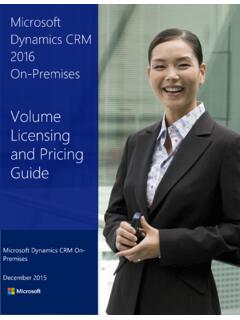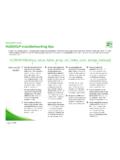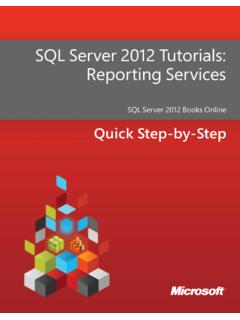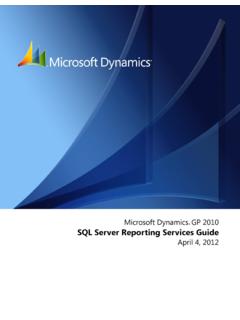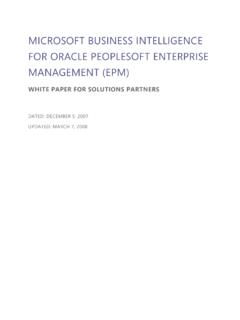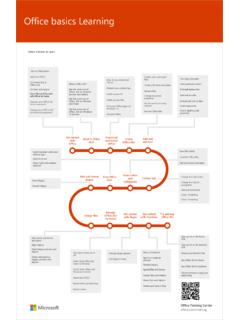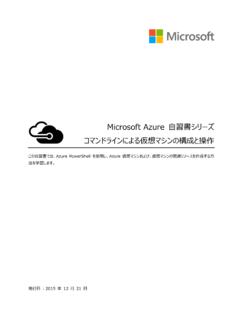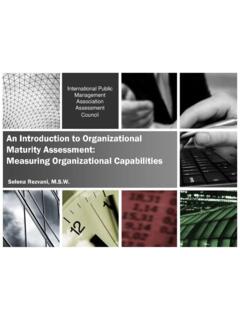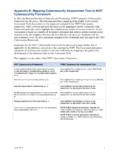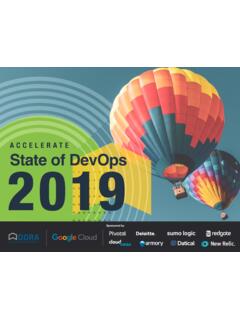Transcription of Zero Trust Maturity Model
1 Zero Trust Maturity Model Cloud applications and the mobile workforce have redefined the security perimeter. Employees are bringing their own devices and working remotely. Data is being accessed outside the corporate network and shared with external collaborators such as partners and vendors. Corporate applications and data are moving from on-premises to hybrid and cloud new perimeter isn t defined by the physical location(s) of the organization it now extends to every access point that hosts, stores, or accesses corporate resources and services. Interactions with corporate resources and services now often bypass on-premises perimeter-based security models that rely on network firewalls and VPNs.
2 Organizations which rely solely on on-premises firewalls and VPNs lack the visibility, solution integration and agility to deliver timely, end-to-end security , organizations need a new security Model that more effectively adapts to the complexity of the modern environment, embraces the mobile workforce, and protects people, devices, applications, and data wherever they are located. This is the core of Zero this document, we will share guiding principles for implementing a Zero Trust security Model and a Maturity Model to help assess your Zero Trust readiness and plan your own implementation journey. While every organization is different and each journey will be unique, we hope the Microsoft Zero Trust Maturity Model will expedite your principles of Zero authenticate and authorize based on all available data points, including user identity, location, device health, service or workload, data classification, and anomalies.
3 Least privileged access. Limit user access with Just-In-Time and Just-Enough Access (JIT/JEA), risk-based adaptive polices, and data protection to protect both data and breach. Minimize blast radius for breaches and prevent lateral movement by segmenting access by network, user, devices, and application awareness. Verify all sessions are encrypted end to end. Use analytics to get visibility, drive threat detection, and improve defenses. Zero Trust overviewInstead of believing everything behind the corporate firewall is safe, the Zero Trust Model assumes breach and verifies each request as though it originates from an uncontrolled network. Regardless of where the request originates or what resource it accesses, Zero Trust teaches us to never Trust , always verify.
4 In a Zero Trust Model , every access request is strongly authenticated, authorized within policy constraints and inspected for anomalies before granting access. Everything from the user s identity to the application s hosting environment is used to prevent breach. We apply micro-segmentation and least privileged access principles to minimize lateral movement. Finally, rich intelligence and analytics helps us identify what happened, what was compromised, and how to prevent it from happening access with policyToday, organizations need to be able to provide secure access to their resources regardless of user or application environment. Before we allow access, we want to assess a user s location, their role in the organization, the health of their device, the type of service and classification of the data they re requesting access to, and more.
5 To do this effectively, we need to use signal and automated policy enforcement to deliver the right balance between security and optimal user Zero Trust security Model relies on automated enforcement of security policy to ensure compliant access decisions throughout the digital estate. The framework of controls built into your security solutions and tools enables your organization to fine-tune access policies with contextual user, device, application, location, and session risk information to better control how users access corporate resources and backend resources communicate. These policies are used to decide whether to allow access, deny access, or control access with additional authentication challenges (such as multi-factor authentication), terms of use, or access and APIs provide the interface by which data is consumed.
6 They may be legacy on-premises, lift-and-shifted to cloud workloads, or modern SaaS applications. Controls and technologies should be applied to discover Shadow IT, ensure appropriate in-app permissions, gate access based on real-time analytics, monitor for abnormal behavior, control of user actions, and validate secure configuration data is ultimately accessed over network infrastructure. Networking controls can provide critical in pipe controls to enhance visibility and help prevent attackers from moving laterally across the network. Networks should be segmented (including deeper in-network micro segmentation) and real-time threat protection, end-to-end encryption, monitoring, and analytics should be , security teams are focused on protecting data.
7 Where possible, data should remain safe even if it leaves the devices, apps, infrastructure, and networks the organization controls. Data should be classified, labeled, and encrypted, and access restricted based on those an identity has been granted access to a resource, data can flow to a variety of different devices from IoT devices to smartphones, BYOD to partner managed devices, and on-premises workloads to cloud hosted servers. This diversity creates a massive attack surface area, requiring we monitor and enforce device health and compliance for secure whether they represent people, services, or IOT devices define the Zero Trust control plane. When an identity attempts to access a resource, we need to verify that identity with strong authentication, ensure access is compliant and typical for that identity, and follows least privilege access Zero Trust into your organizationA Zero Trust approach should extend throughout the entire digital estate and serve as an integrated security philosophy and end-to-end strategy.
8 This is done by implementing Zero Trust controls and technologies across six foundational elements: identities,devices,applications, data, infrastructure,and of these six foundational elements is a source of signal, a control plane for enforcement, and a critical resource to be defended. This makes each an important area to focus (whether on-premises servers, cloud-basedVMs,containers,or micro-services) represents a critical threat vector. Assess for version, configuration, and JIT access to harden defense, use telemetry to detect attacks and anomalies, and automatically block and flag risky behavior and take protective Trust across the digital estateIn an optimal Zero Trust implementation, your digital estate is connected and able to provide the signal needed to make informed access decisions using automated policy enforcement.
9 Let s explore how the major components of the Zero Trust Model all work together to deliver end-to-end coverage. Improving visibility and embracing security automationBecause Zero Trust relies heavily on signal and solution integration to be successful, this is a great time to work towards providing greater visibility into your threat landscape and embracing security automation. The Security Operations Center (SOC) should have a multi-tier incident response team in place that uses advanced threat detection and AI-driven alert management capabilities to cut through the noise and deliver prioritized security alerts. Response to common incidents, such as denying access to infected devices, should be automated to improve response times and reduce risk Security Policy EnforcementIdentities User/session riskMulti-factor authenticationIdentity providerDevice identityDevice risk & compliance stateClassify, label, encryptVisibility and AnalyticsAutomationEmails & documentsStructured dataData Adaptive Access AppsSaaS AppsOn-premises AppsNetwork deliveryInternal Micro-segmentationNetworkInfrastructureJ IT and Version ControlIaaSPaaSInt.
10 SitesContainersServerlessAccess & runtime controlThreat protectionThis is where most organizations generally sit today if they haven t started their Zero Trust journey: On-premises identity with static rules and some SSO. Limited visibility is available into device compliance, cloud environments, and logins. Flat network infrastructure results in broad risk this stage, organizations have begun their Zero Trust journey and are making progress in a few key areas: Hybrid identity and finely-tuned access policies are gating access to data, apps, and networks. Devices are registered and compliant to IT security policies. Networks are being segmented and cloud threat protection is in place. Analytics are starting to be used to assess user behavior and proactively identify in the optimal stage have made large improvements in security: Cloud identity with real-time analytics dynamically gate access to applications, workloads, networks, and data.

